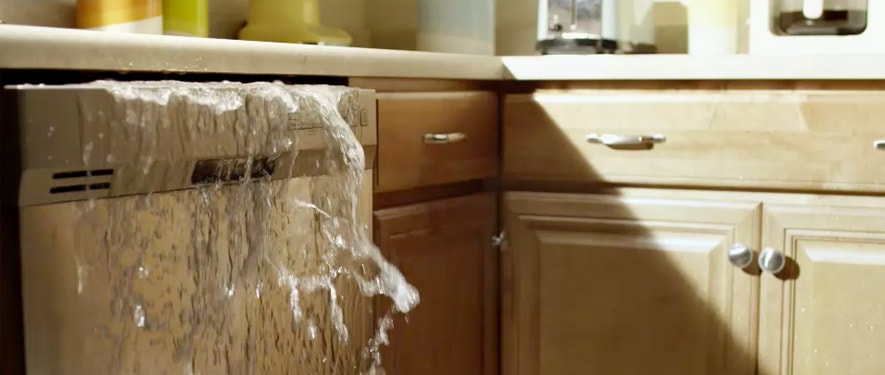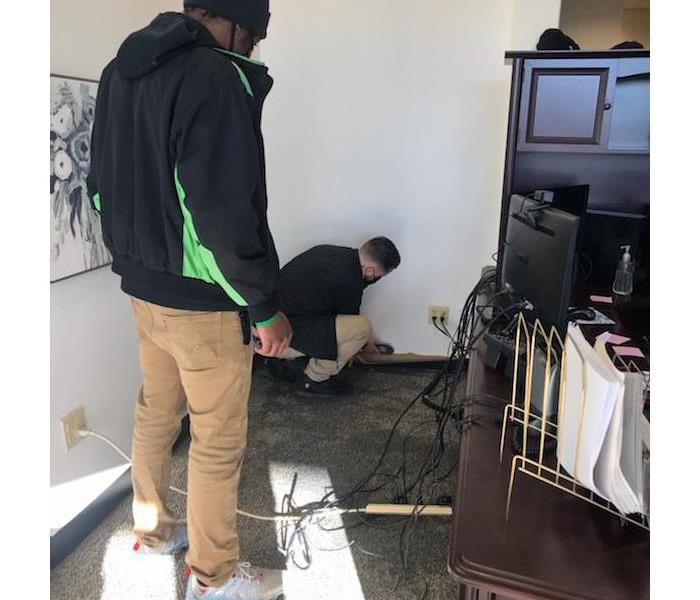Mold is a persistent problem that can cause significant damage to homes and businesses alike. It infiltrates spaces where moisture is present, often as a result of water damage. Understanding https://sites.google.com/view/servpro-of-auburn-enumclaw/home the connection between water damage and mold growth is essential for effective mold remediation. This article explores this relationship in detail, providing insights into prevention, identification, and remediation strategies.
What is Mold?
Mold is a type of fungus that thrives in moist environments. It reproduces through spores that can easily become airborne and settle on various surfaces. When conditions are right—specifically, when there's sufficient moisture—these spores can germinate and form new mold colonies.
The Science Behind Mold Growth
Understanding how mold grows requires knowledge of its biological processes:
- Spore Formation: Molds produce tiny spores that are released into the air. Germination: When spores land on a damp surface, they can absorb moisture and begin to grow. Colonization: As molds colonize a surface, they can spread rapidly if the conditions remain favorable (warmth and humidity).
The Role of Humidity in Mold Development
Humidity levels play a pivotal role in mold development. Ideal relative humidity for mold growth typically ranges between 60% to 80%.
How Mold Takes Hold: The Connection Between Water Damage and Mold Growth
Water damage serves as an ideal catalyst for mold growth. When water seeps into areas such as walls, ceilings, or floors, it creates a perfect breeding ground for mold spores.
Common Causes of Water Damage
Water damage can occur due to various reasons:
Leaky Pipes: A slow leak can create dampness over time. Roof Leaks: Rainwater infiltrating through damaged roofs leads to significant issues. Flooding: Natural disasters can cause overwhelming floods. Condensation: High humidity indoors can lead to condensation on cold surfaces.Signs of Water Damage
Recognizing signs of water damage early can prevent severe mold problems:


- Stained walls or ceilings Peeling paint or wallpaper A musty odor Visible mold growth
The Process of Mold Growth After Water Damage
Once water damage occurs, the subsequent steps leading to mold growth typically include:
Moisture Retention: Materials like drywall or wood retain moisture long after water exposure has ceased. Spore Activation: Spores lying dormant activate with appropriate moisture levels. Rapid Colonization: Within 24 to 48 hours post-water exposure, visible mold may appear.How Long Does It Take For Mold To Grow?
From the moment water intrudes into your home, it may take as little as 24 hours for mold to begin growing under optimal conditions.
Fire Damage and Its Indirect Connection to Mold Growth
It's essential to consider fire damage alongside water damage since firefighting efforts often involve significant amounts of water being used.
The Link Between Fire Damage and Moisture
When structures are compromised by fire:
- Firefighters use large volumes of water to extinguish flames. This results in soaked materials which then become susceptible to mold.
Preventative Measures Post-Fire Damage
Implementing adequate precautions following fire incidents includes:
Immediate removal of wet materials. Drying out affected areas using fans or dehumidifiers. Monitoring humidity levels closely.Recognizing Different Types of Molds
Understanding the different types of molds that could be present post-water damage helps identify health risks associated with them.
Common Types of Indoor Molds Include:
- Aspergillus: Often found in food products; some species are allergenic. Cladosporium: Commonly found outdoors but can thrive indoors with moisture. Stachybotrys chartarum (Black Mold): Known for producing mycotoxins; poses health risks.
Health Risks Associated with Mold Exposure
Exposure to mold can have varying effects on individuals depending on their sensitivity levels.
Common Symptoms Include:
Sneezing Coughing Skin irritation Respiratory issuesLong-term Effects
For those with asthma or weakened immune systems, prolonged exposure could lead to more serious health complications.
Mold Remediation Techniques After Water Damage
Once you’ve identified the presence of mold after water damage, swift action is crucial for effective remediation.
Assessing the Extent of Damage
Before initiating any remediation process:
Conduct a thorough inspection. Fire and smoke damage repair Auburn Identify all affected areas. Determine if professional help is required based on severity.Steps Involved in Professional Mold Remediation Include:
Containment – Sealing off affected areas from unaffected spaces. Air Filtration – Utilizing HEPA filters to capture airborne spores. Removal – Removing contaminated materials (drywall, carpets). Cleaning – Using antimicrobial solutions on remaining surfaces. Restoration – Repairing any structural damages caused by both water and mold.DIY vs Professional Mold Remediation: What You Should Know?
While some homeowners may attempt DIY methods for minor infestations, professional intervention is advisable in many scenarios due to safety concerns and efficacy.
Pros & Cons
| Aspect | DIY Approach | Professional Services | |------------------------|---------------------------------------|--------------------------------------| | Cost | Generally cheaper | Higher upfront costs | | Expertise | Limited knowledge | Trained professionals | | Time | May take longer | Faster resolution | | Safety | Potential health risks | Safe procedures |
FAQs About Mold Growth Related To Water Damage
FAQ 1: Can I remove minor molds myself?
Yes, minor molds can sometimes be removed using household cleaners; however, precautions should be taken regarding safety gear like masks and gloves.
FAQ 2: How do I prevent future mold growth?
Controlling indoor humidity levels below 60%, repairing leaks promptly, and ensuring good ventilation are key preventive measures against future growth.
FAQ 3: Is all black mold dangerous?
Not all black molds are toxic; however, certain strains like Stachybotrys chartarum are known for their harmful mycotoxins which pose health risks.
FAQ 4: How do I know if I need professional help?
If the area affected exceeds ten square feet or if you experience respiratory Mold removal services Auburn issues during cleanup efforts, contacting professionals is advisable.
FAQ 5: What should I do immediately after discovering water damage?
Remove any standing water promptly using pumps or towels; then dry out the space thoroughly within 24 hours before checking for any signs of mold growth.
FAQ 6: Can air conditioning prevent indoor molds?
Air conditioning helps reduce humidity levels but should be regularly maintained so filter systems work effectively against airborne spores and dust particles contributing towards potential fungal growths .
Conclusion
In summary, understanding how mold takes hold through its connection with water damage is vital in safeguarding your home from this invasive fungus's detrimental effects . By identifying sources , monitoring environmental factors , implementing proper remediation techniques , you create an environment less conducive to unwanted intrusion by these pesky organisms . Remember : timely action matters not just when addressing existing problems but also preventing future ones from taking root!